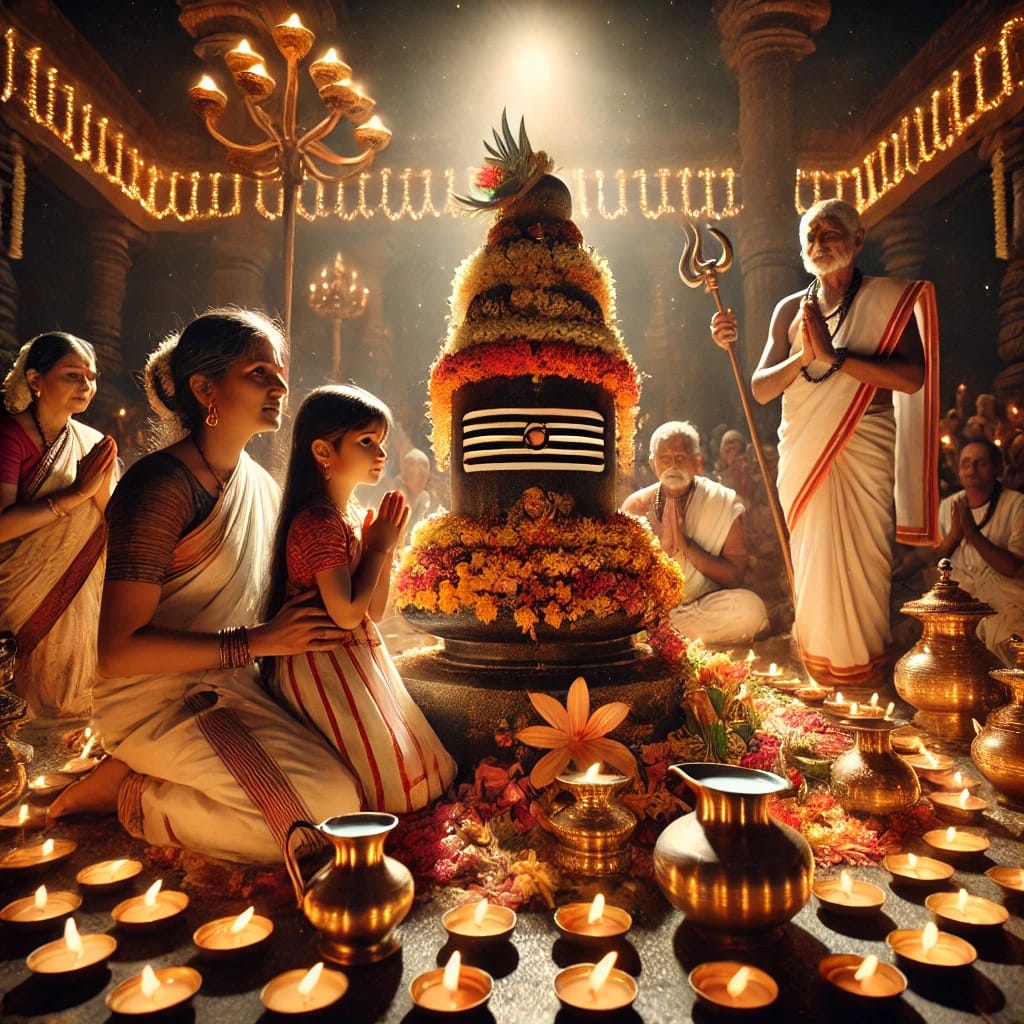The temple bells chimed, a low, resonant hum against the star-dusted night. Little Maya, eyes wide with awe, clung to her grandmother’s hand. Tonight was Maha Shivaratri, the sacred night of Lord Shiva. The air vibrated with chants, and the thick scent of incense wrapped around them like a warm embrace.
Maya watched as the priest poured milk over the stone lingam, a symbol of Shiva’s boundless power. Her grandmother leaned close, whispering stories of Shiva’s compassion, his cosmic dance of destruction and creation. A shiver ran through Maya—not of fear, but of wonder.
The night deepened, the chants rose in intensity, and in that sacred moment, Maya knew, deep in her heart, that she had witnessed the divine.
Maha Shivaratri is a profoundly spiritual Hindu festival dedicated to Lord Shiva, symbolizing the victory of light over darkness. Observed on the 14th night of the waning moon in the month of Phalguna, devotees fast, maintain an all-night vigil (jagarana), and immerse themselves in prayers and meditation. Offerings of milk, fruits, and bel leaves are made to the Shiva Lingam, signifying devotion. The festival honors several legends, including Shiva’s cosmic Tandava dance and his divine union with Parvati. It is a time for deep reflection, spiritual awakening, and chanting the sacred mantra, Om Namah Shivaya mantra.


This beautifully captures the essence of Maha Shivaratri—the reverence, the mysticism, and the profound spiritual connection. The imagery of Maya’s wonder reflects how the festival not only honors Lord Shiva but also inspires awe and devotion across generations. It’s a reminder of the timeless power of faith and the celebration of light overcoming darkness.
A well written general incident of a girl and her grandmother and how they experience the aesthetics and presence of Lord Shiva’s power. Very Nice Adi 👍👍